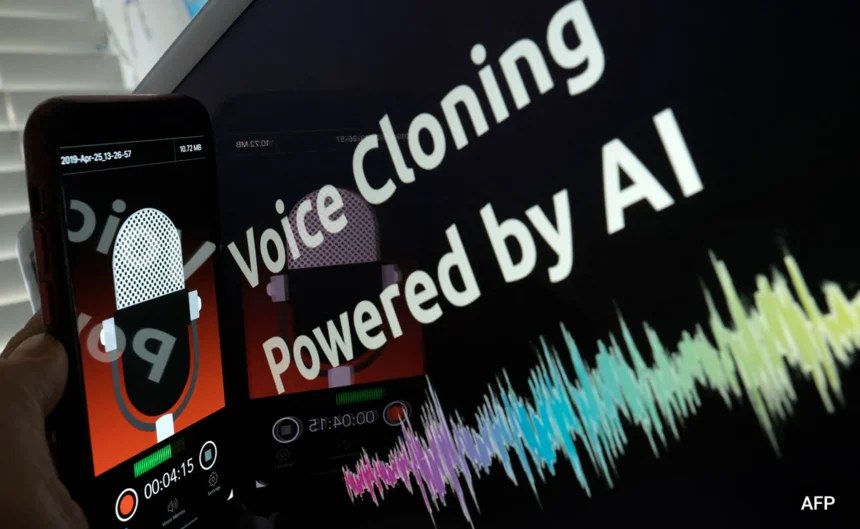Introduction: The Rise of Synthetic Voices
The world is speaking in new ways — literally.
With the rapid evolution of artificial intelligence, voice cloning or deep-voice technology has moved from science fiction to mainstream reality. It allows anyone to replicate a person’s voice using a short audio sample, creating realistic speech that mimics tone, pitch, and emotion.
This innovation has immense potential. Businesses use cloned voices to create personalized customer experiences, media companies build lifelike narrations, and accessibility tools empower people with speech impairments to “regain” their natural voice.
However, this same technology also brings serious concerns around security, digital identity, and trust. As synthetic voice models become indistinguishable from real ones, the question isn’t just what voice cloning can do — it’s how safely we can use it.
What Is Voice Cloning and How Does It Work?
AI Voice cloning uses deep learning and neural networks to analyze and reproduce the unique features of a person’s voice. AI models process samples to learn speech patterns, tone, pronunciation, and rhythm. Once trained, the model can generate new speech that sounds remarkably like the original speaker — even saying words the person never actually spoke.
This is powered by technologies such as:
- Generative Adversarial Networks (GANs): to refine realism through two AI models competing for accuracy.
- Natural Language Processing (NLP): to interpret and convert text into lifelike, emotionally expressive speech.
- Neural Text-to-Speech (NTTS): to synthesize human-like voices in real time.
These breakthroughs have driven an explosion in voice applications — from virtual assistants to audiobooks and customer service automation. But as the line between real and artificial voice blurs, the digital world faces a new challenge: maintaining digital trust.
1. The Dual Edge of Voice Cloning
Voice cloning is a classic example of dual-use technology — capable of great benefit and significant harm.
Positive Applications:
- Accessibility: Voice cloning restores speech for people affected by neurological conditions or voice loss.
- Localization: It helps global brands deliver multilingual audio content using consistent voice identity.
- Customer Experience: Businesses use cloned voices for interactive assistants that sound personal and familiar.
- Creative Media: Podcasters and filmmakers use it to generate high-quality narrations quickly and cost-effectively.
Risks and Challenges:
- Fraud and Impersonation: Cybercriminals can clone voices to mimic executives or family members and trick victims into financial or data transfers.
- Disinformation: Fake audio clips can spread misinformation or manipulate public perception.
- Consent and Privacy Violations: Using someone’s voice without permission breaches ethical and sometimes legal boundaries.
The power of cloned voices lies in their realism — and that realism can either build or destroy trust.
2. Voice as a New Form of Digital Identity
A person’s voice is as unique as a fingerprint. In many systems, voice recognition already functions as a biometric identifier. Banks, call centers, and authentication services use it to verify users.
Now imagine cloned voices entering the equation. If anyone can duplicate a voice with minimal samples, the reliability of voice-based authentication collapses.
That’s why companies and regulators are rethinking what it means to “own” a voice in digital spaces. Voice is no longer just sound — it’s a form of digital identity that must be protected like passwords or biometric data.
To sustain trust, organizations must establish voice integrity protocols, ensuring that:
- Recorded voices include watermarks or digital signatures for authenticity.
- Systems detect synthetic speech using AI deepfake detection models.
- Users give explicit consent before voice cloning or recording.
Protecting voice identity isn’t only about security — it’s about preserving personal autonomy and ethical use of AI.
3. The Threat Landscape: Voice Cloning and Cybersecurity
In 2024, cybersecurity analysts reported a sharp rise in voice-based deepfake scams. Attackers used cloned voices to impersonate CEOs and authorize fraudulent fund transfers, costing organizations millions.
Voice cloning attacks are particularly dangerous because they bypass traditional verification systems. Humans naturally trust familiar voices — and AI exploits that instinct.
Here’s how threat actors leverage deep-voice technology:
- Vishing 2.0: Voice phishing with AI-generated calls mimicking real people.
- Social Engineering: Fraudsters use cloned voices to emotionally manipulate targets.
- Data Exfiltration: Fake support calls trick employees into revealing credentials.
To defend against these, cybersecurity teams must combine technical solutions (voice deepfake detectors, call verification systems) with awareness training. Employees and users should learn to question voice-based requests, even if they sound authentic.
Digital trust now depends on verifiable voice authenticity — not just familiarity.
4. Ethical and Legal Implications of Voice Cloning
Voice cloning sits at the intersection of innovation and ethics. Without regulation, it risks violating privacy and intellectual property rights.
Key ethical questions include:
- Who owns a person’s voice data once recorded?
- Can someone license or monetize their digital voice clone?
- How should consent and transparency be enforced when using synthetic speech?
Governments are responding. The EU AI Act, US deepfake disclosure laws, and various privacy frameworks are beginning to outline responsibilities for developers and content creators.
Companies deploying voice cloning should follow ethical best practices, including:
- Obtaining informed consent before voice recording or reproduction.
- Labeling AI-generated content to prevent deception.
- Securing stored voice data with encryption and access controls.
- Maintaining audit trails for all generated audio outputs.
By building accountability and transparency into their processes, organizations can harness voice cloning responsibly while maintaining public trust.
5. Enhancing User Experience with Responsible Voice Cloning
Despite its risks, voice cloning can redefine user experience (UX) when implemented ethically.
Imagine a blockchain wallet or financial dashboard that greets users with a familiar, trusted voice — guiding them through updates, explaining analytics, and alerting them to unusual activity.
When users can hear personalized, natural voices, they engage more deeply and trust the platform’s reliability.
Key UX benefits include:
- Personalization: Tailor interactions using familiar or brand-consistent voices.
- Accessibility: Provide spoken interfaces for visually impaired or multitasking users.
- Emotional Connection: Human-sounding voices increase empathy and satisfaction.
However, transparency remains critical. Users should always know whether a voice is human or synthetic. The goal isn’t to deceive — it’s to enhance clarity and comfort in digital communication.
6. How Companies Can Build Digital Trust Around Voice Cloning
Trust doesn’t happen automatically. Businesses exploring voice cloning should adopt a Digital Trust Framework that prioritizes ethics, privacy, and security.
Here’s how to build that foundation:
- Transparency First: Clearly communicate when and why cloned voices are used.
- Consent Management: Allow users to opt in or out of voice data usage.
- Watermarking & Detection: Embed identifiers in synthetic audio and deploy AI tools to spot manipulated voices.
- Collaboration with Regulators: Engage with policymakers to shape responsible standards for voice cloning.
- Continuous Education: Train employees and users to recognize and respond to voice-based deepfakes.
By taking proactive measures, companies can demonstrate integrity, fostering both innovation and accountability in voice technology.
7. The Future of Voice Cloning and Digital Trust
The future of voice cloning lies in balance — balancing creativity with caution, and personalization with privacy.
As deep-voice models continue to evolve, they’ll integrate with AR, VR, and the metaverse, creating immersive environments where digital avatars speak in our real voices. This will redefine communication, storytelling, and digital identity itself.
However, the success of this transformation depends on one factor: trust. Users will only embrace voice cloning when they believe their voices — and the voices of others — are secure, consented, and authentic.
The next generation of digital platforms must therefore treat voice not just as a feature, but as a trusted human asset.
Conclusion: Giving Voice Cloning a Code of Ethics
Voice cloning represents one of the most powerful intersections of AI and human experience. It can restore voices, build accessibility, and personalize technology in ways never imagined. But it also challenges our concepts of identity and truth.
To protect digital trust, organizations must use deep-voice technology with transparency, consent, and strong governance. Voice should never become a weapon of manipulation — it should remain a bridge between humans and machines.
By embracing ethical frameworks and AI accountability, we can ensure that the voices shaping our digital future speak not only with realism — but with integrity.









